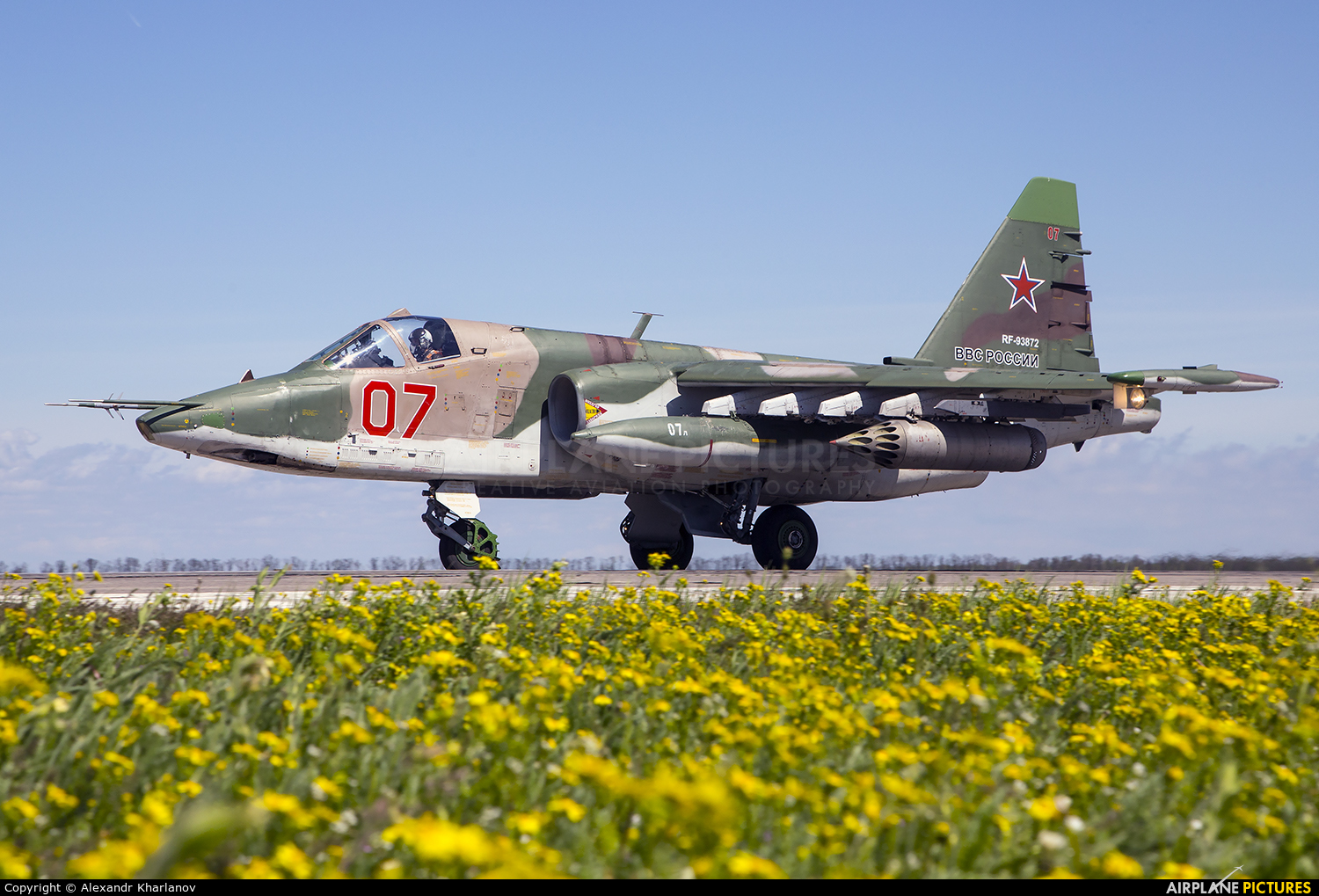The Sukhoi Su-25, often referred to by its NATO reporting name “Frogfoot,” is a cornerstone of ground attack aviation, embodying ruggedness and reliability. Developed by the Sukhoi Design Bureau in the 1970s, the Su-25 was designed to provide close air support (CAS) to ground troops and perform a variety of ground-attack missions. With its proven track record and continued relevance, the Su-25 remains an essential asset for numerous air forces around the world.

Development and Design
The development of the Su-25 began in the early 1970s, driven by the need for a dedicated ground attack aircraft capable of withstanding the rigors of battlefield environments. The Su-25 made its maiden flight in 1975, and it was introduced into service with the Soviet Air Force in 1981. The aircraft’s design focuses on durability and effectiveness in close support roles, featuring a heavily armored cockpit and vital components to protect against ground fire.
Robust and Reliable Design
The Su-25 is built with a rugged airframe and reinforced armor to endure battle damage. The cockpit is equipped with armored plating to shield the pilot from small arms fire and shrapnel. Its twin-engine design, with two RD-33 turbofan engines, ensures redundancy and reliability in adverse conditions. The aircraft’s high-mounted, straight wings are designed for low-speed stability and enhanced maneuverability at low altitudes.

Advanced Avionics and Systems
The Su-25 features a suite of avionics and systems tailored for ground attack missions. The aircraft is equipped with the Sokol navigation and targeting system, which includes a laser rangefinder and targeting system for precision strikes. Additionally, the Su-25 employs an advanced electronic countermeasures (ECM) suite to protect against enemy radar and missile systems.
The cockpit of the Su-25 is designed with a focus on pilot visibility and ergonomics. It features multi-function displays and analog gauges to provide real-time data and enhance situational awareness during combat operations.
Versatile Armament
One of the standout features of the Su-25 is its versatile armament, which includes a variety of munitions designed to engage a wide range of targets. The aircraft is equipped with a 30mm GSh-30-2 cannon, which is mounted in a belly pod for close-in ground engagements. The Su-25 can carry a diverse array of bombs and rockets, including guided and unguided munitions.
The aircraft’s hardpoints can accommodate a variety of air-to-ground weapons, such as the Kh-25 (AS-10 ‘Karen’) and Kh-29 (AS-14 ‘Kedge’) missiles, as well as cluster bombs and precision-guided munitions. This flexibility allows the Su-25 to perform multiple roles, from attacking armored vehicles and fortifications to providing close support for infantry.

Operational History
The Su-25 has seen extensive combat service in various conflicts around the world. It has been used in numerous operations, including the Soviet-Afghan War, the Chechen Wars, and more recent conflicts in Syria and Ukraine. The aircraft’s durability and effectiveness in close support roles have been proven time and again, demonstrating its value in providing direct fire support to ground forces.
The Su-25’s ability to operate from austere airstrips and its resilience to damage make it a reliable asset in contested environments. Its continued use by several countries highlights its enduring relevance and effectiveness in modern warfare.
Modern Upgrades and Variants
Over the years, the Su-25 has undergone several upgrades and modifications to enhance its capabilities. Modern variants, such as the Su-25SM and Su-25SM3, feature improved avionics, upgraded targeting systems, and enhanced weaponry. These upgrades ensure that the Su-25 remains a potent ground attack platform, capable of adapting to evolving threats and mission requirements.
Global Reach and Export
The Su-25 has been exported to numerous countries, including Angola, Armenia, Bulgaria, Ethiopia, and Vietnam. Its affordability, rugged design, and proven performance make it an attractive option for nations seeking a reliable ground attack aircraft. The Su-25’s global presence underscores its significance as a key player in the ground attack role.

Conclusion
The Sukhoi Su-25 stands as a testament to Russian engineering and military aviation design. Its robust construction, versatile armament, and proven operational history make it a formidable ground attack aircraft. As a reliable and effective platform for close air support and ground attack missions, the Su-25 continues to play a crucial role in modern military operations.
With its legacy of performance and adaptability, the Su-25 remains a vital asset for air forces worldwide, embodying the principles of durability and effectiveness in the face of evolving combat challenges.





